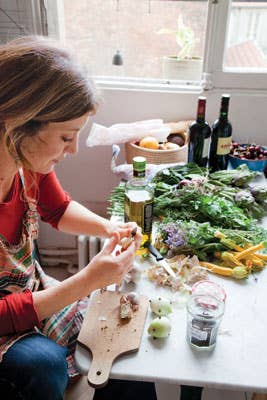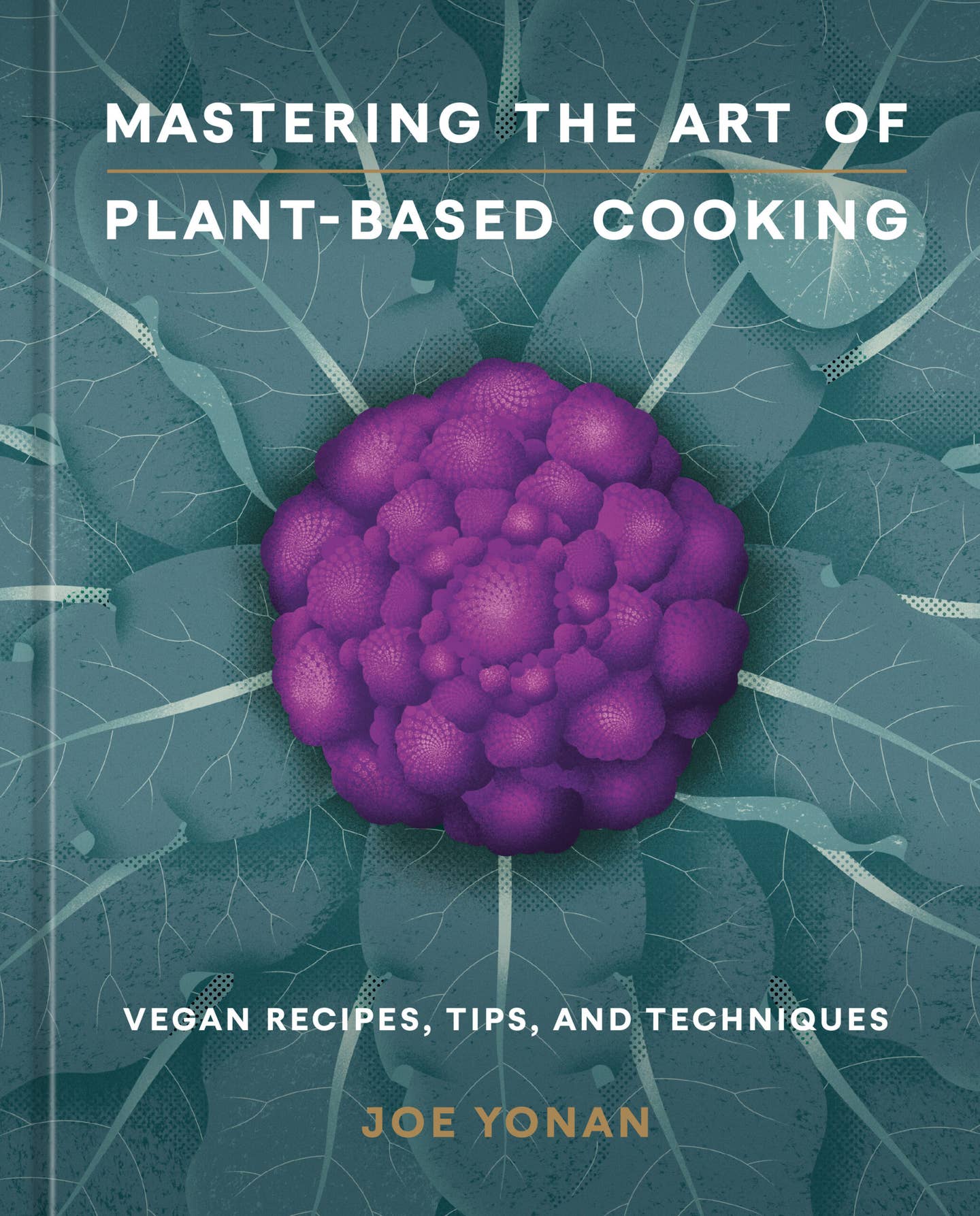
Making Sunday Supper
"I love lamb," says Camille Labro. "If I had to pick, it would be my favorite meat. It's so velvety, so milky." Labro, a 38-year-old Parisian food writer who is compiling a cookbook of her mother's Provençal recipes, is pulling her wheeled shopping cart past the vendor stalls of the Marche Richard-Lenoir, just off the place de la Bastille in Paris. Her destination is Boucherie Bruno, the stall of a popular butcher who sells only at the market. She's buying ingredients for a favorite Sunday meal: a slow-roasted gigot d'agneau, or leg of lamb, seasoned with herbs and garlic and served with stewed white beans. It's her family's rendition of the classic gigot de sept heures, or seven-hour lamb.
It's early in the morning still, but a long line has formed at Boucherie Bruno. Fortunately, Labro placed her order last week. "I learned long ago that if you don't reserve ahead, everything good just disappears," she says, as the butcher hands her a neatly wrapped parcel, which she opens before paying for the meat. Wrapped in the white paper is a plump, four-pound leg of baby lamb from which the butcher has thoughtfully removed the pelvic bone—to make it easier to slice—before tying the leg back together with kitchen twine. Labro smiles. It's perfect.
The French have a special fondness for lamb; they raise some of the best in the world, and chefs and home cooks transform it into a remarkable array of dishes. It's part of their culture, their heritage: the slow-cooked shanks served at bistros; the rib racks crusted with a paste of garlic and parsley, called a persillade, and roasted for special occasions; lamb loin chops skewered with a sprig of rosemary and rubbed with olive oil and herbs before being grilled over charcoal. Particularly in regions where sheep's milk is needed for the making of cheese, like Roquefort and Ossau-Iraty, lamb is produced and consumed in great quantities. The lamb Labro has bought comes from the Midi-Pyrenees region, which specializes in milk-fed Aveyron lamb, prized for its succulence.
Back in her apartment, a large, airy flat in the 11th arrondissement, Labro unloads the contents of her cart—herbs, garlic, the lamb, a baguette, a bottle of red wine from the southern Languedoc region—and arranges the ingredients on her kitchen table. She pulls an old wooden pepper grinder off a shelf and gives it a few turns, sending a coarsely ground mixture of peppercorns into the drawerlike receptacle in the bottom of the grinder, which she sets aside. She rubs the lamb all over with olive oil; then she retrieves a cocotte, a heavy enameled Dutch oven, from a cupboard and sets it over a high flame. Finally, she sprinkles the lamb with the pepper and some coarse salt and nestles it into the cocotte to let it sear.
While the lamb browns, Labro breaks open a head of garlic and scatters the unpeeled cloves into an oiled glass casserole dish. Atop the garlic cloves she builds a loose nest of fresh rosemary sprigs, bay leaves, and savory. "Everyone in Provence grows and loves savory," she says of the peppery herb. "When I taste it, I have a rush of memories from my garden." Once the lamb has browned all over, she removes it from the cocotte and places it on top of the herbs in the casserole dish. Next, she empties a leftover bottle of white wine from her refrigerator into the still-sizzling cocotte, freeing the caramelized bits from the bottom of the pot, before pouring the mixture of wine and meat juices over the lamb. Into the oven goes the meat, which will cook at 300 degrees or so for most of the afternoon. "In the end," she says, "the lamb should be confit: caramelized, sticky to the teeth, almost melting."
Now Labro turns to the beans— small white ones that go by the name coco de Paimpol—which have been soaking in a pot of water overnight. "These are from the Lorraine, like the ones my great-great-grandmother used to make," says Labro, as she sets the pot on the stove to simmer. To the beans she adds a clove-studded onion and a thick bundle of herbs: flat-leaf parsley, thyme, and bay leaves. Later, she'll mix the beans with a puree of raw garlic and creme fraiche.
Early-afternoon sunlight streams into the kitchen, and the room is filled with a heady aroma of herbs, garlic, wine, and braising lamb. Labro opens the oven door and steals a forkful of tender lamb; it's juicy and rich and almost ready. Brushing a strand of hair from her face, she consults the crumpled piece of paper her mother's recipe is written on, to make sure she's got everything right. "It can be frustrating because my mother never uses measures or gives cooking times," she says. But with dishes this forgiving, those details hardly ever matter.
Keep Reading
Continue to Next Story










